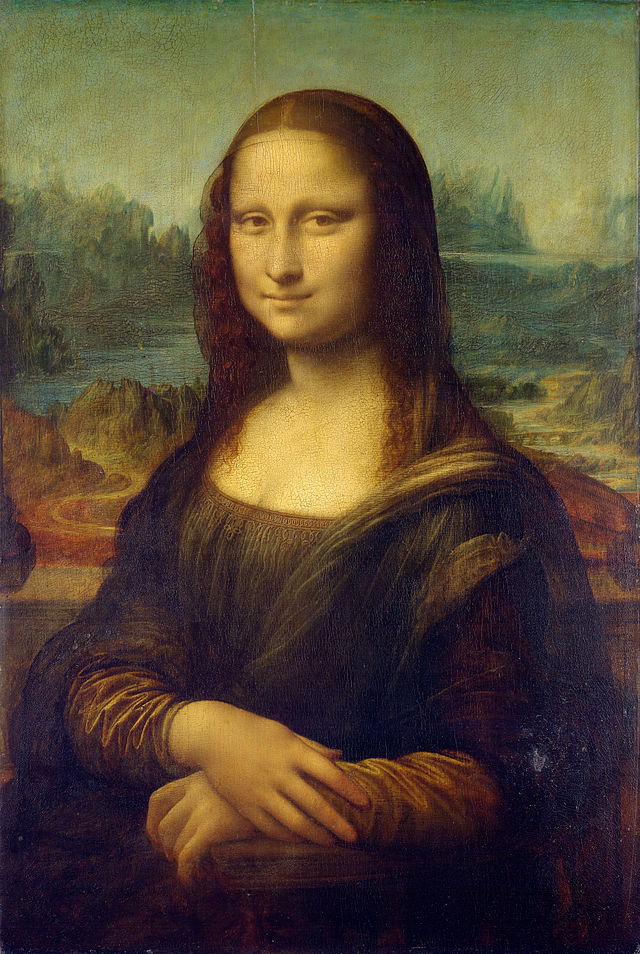This is arguably the most famous portrait in Western art; nevertheless, it remains shrouded in mystery, which may be the reason the image is so alluring. Of course, it also is appealing because it is a magnificent and beautiful object. Leonardo’s unique technique of modeling called sfumato provides the painting with an incredibly soft appearance as if viewed through a veil of smoke.
The rocky landscape is an invention of the artist. The pathways and rivers meander through large outcroppings of spiky rocks and fade in the distance where Leonardo used aerial perspective. This type of perspective is based on the observation that in the natural world, objects in the far distance appear less defined to the human eye.
And then there is Mona Lisa’s lovely face and smile – a virtuoso performance of the sfumato technique. Her face glows through the haze. Her skin is flawless. Curiously, there are no eyelashes or eyebrows, but those have simply faded over time. The real mystery of the painting is in the smile… or is she not smiling? The modeling is so subtle that it is hard to know for sure. Her expression is calm and warm, yet the eyes betray suspicion at worst, aloofness at best. It is a soft and warm painting of a cool and distant subject.
Who is Mona Lisa? Researchers have proposed many theories including that she is Isabella d’Este, Leonardo’s young male model in drag, and Leonardo da Vinci, himself; however, after years of deliberation and debate, scholars generally agree that she is Lisa del Giocondo of the Gherardini family of Florence. Lisa was the wife of a silk merchant named Francesco del Giocondo who probably commissioned the painting to celebrate the birth of the couple’s son, Andrea.
Sally Coleman | The Art Minute
More works of art by Leonardo da Vinci
[nggallery id=3]
Related Events
See Rino Pizzi’s Mona Lisa Project, a collaboration by contemporary artists, on view at the Austin Museum of Art through September 11, 2011 and then at the Grand Rapids Art Museum from September 21 – November 6, 2011.
Recommended Reading


